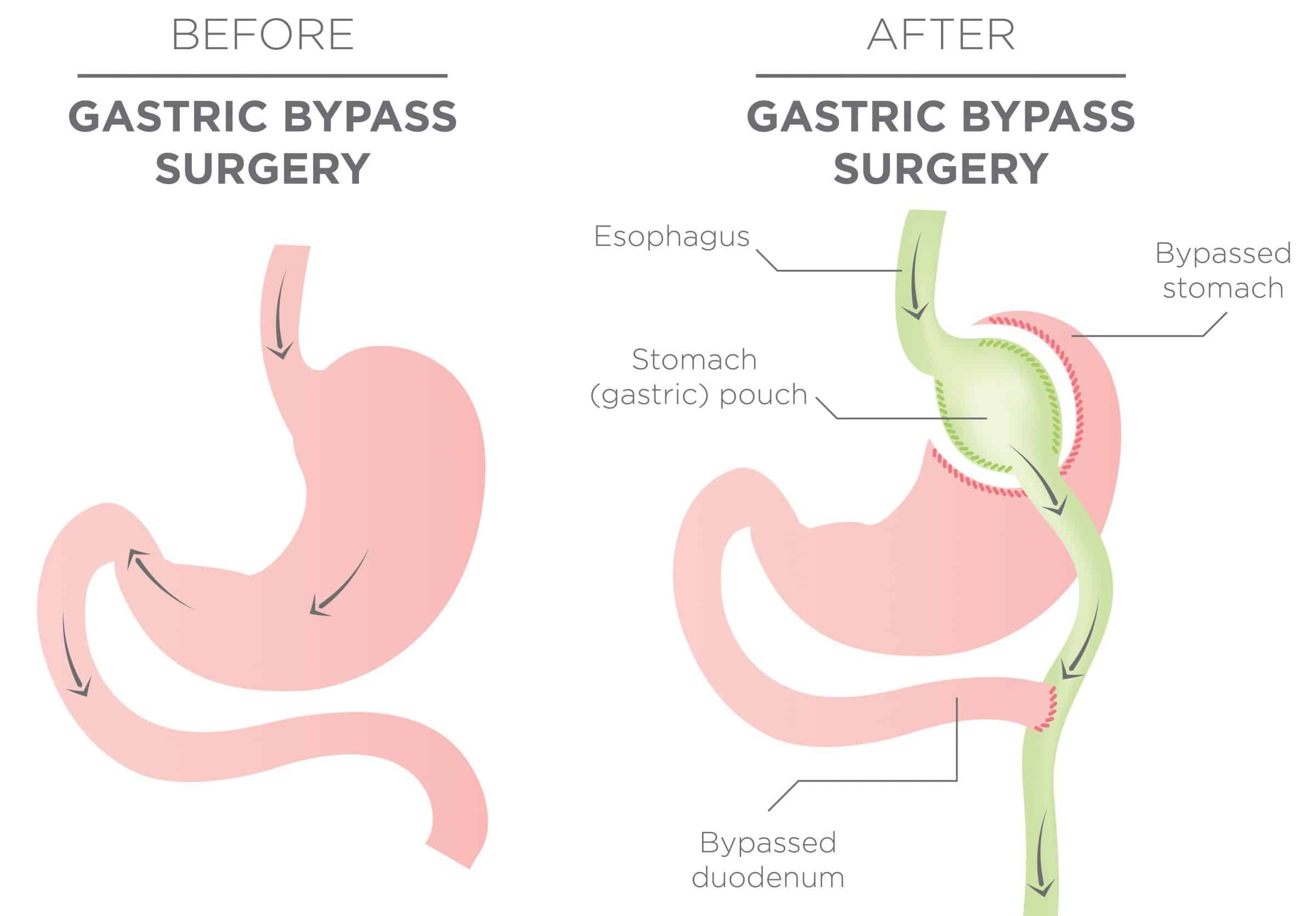This article is for educational purposes only. It should not be used as a template for consenting patients. The person obtaining consent should have clear knowledge of the procedure and the potential risks and complications. Always refer to your local or national guidelines, and the applicable and appropriate law in your jurisdiction governing patient consent.
Overview of Procedure
A gastric bypass procedure works via both a restrictive and malabsorptive mechanism, and is a core procedure within bariatric surgery
Most of the stomach is divided and a small gastric pouch formed. This is joined on to the small bowel approximately 0.75-1 metre from the caecum. Bile flow is restored via a Roux-en-Y anastomosis.
Complications
Intra-Operative
| Complication | Description of Complication | Potential Ways to Reduce Risk |
| Haemorrhage | Damage to any of the surrounding structures can cause significant haemorrhage | |
| Injury to surrounding structures including bowel, liver, and spleen | Damage can occur to any surrounding organ during the surgery | |
| Anaesthetic risks | Includes damage to the teeth, throat and larynx, reaction to medications, nausea and vomiting, cardiovascular and respiratory complications | Forms a part of the anaesthetist assessment before the operation |
Early
| Complication | Description of Complication | Potential Ways to Reduce Risk |
| Infection | Includes both wound infections and intra-abdominal collections, as well as respiratory or urinary tract infections post-operatively | Intravenous antibiotics at induction, wound irrigation at closure, and early mobilisation |
| Anastomotic Leak or Leak from the Staple Line | Leakage from the staple line or either of the anastomoses may occur. These can be potentially serious and frequently requires further surgery, tube feeding, and a prolonged hospital stay | |
| DVT or PE, MI, Stroke, or Mortality | As with any major surgery, whilst these events are uncommon, important to be aware of; the mortality risk is over 1 in 200 | Adequate pre-optimisation and anaesthetic assessment, peri-operative prophylactic LMWH, high-dependency level care post-operatively |
Late
| Complication | Description of Complication | Potential Ways to Reduce Risk |
| Metabolic and endocrine disturbances | Changes to absorption and gastric secretions of the alimentary canal can affect nutrition considerably post-operatively | The involvement of a specialist bariatric dietician in the management of bariatric patients is essential |
| Anastomotic stricture | The anastomosis may narrow over time. This can lead to malnutrition and require revisional surgery | |
| Ulcer Formation in the Gastric Pouch | This are rare, but ulcers can form in the gastric pouch which can bleed or perforate | |
| Internal hernia | Protrusion of bowel into the mesenteric defect (Peterson’s space) can result in bowel obstruction and / or ischaemia | Closure of the mesenteric defect intra-operatively can reduce this risk |
| Failure to Lose Weight | A gastric bypass is highly effective, but inevitably a minority of patients ultimately fail to lose weight |

